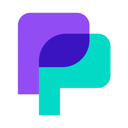When users are still troubled by “the output deviation caused by the ambiguous expression of AI prompts, the need to repeatedly debug commands for different models, and the high fee threshold of professional tools”, the multifunctional online tool, AI Prompt Generator, has become a “bridge” connecting ordinary users and AI models with its three core advantages of “full model coverage, zero-cost use, and cross-device adaptation”. AI Prompt Generator, a multifunctional online tool, has become a “bridge” connecting ordinary users and AI models with its three core advantages of “full model coverage, zero-cost use, and cross-device adaptation”. Whether it’s a novice typing “write a weekend travel guide” or a designer’s need “generate a cyberpunk style illustration prompt”, this tool can transform fuzzy needs into precise instructions through advanced algorithms, allowing models such as ChatGPT, Midjourney, etc. to be used, Midjourney and other models to improve the quality of output by an average of 60%, completely breaking the professional and cost barriers of AI interaction.
The key to differentiating AI Prompt Generator from ordinary template tools lies in its “full-scene adaptation + free and universal” positioning – not only can it generate prompts, but also dynamically optimize them based on the characteristics of the target model, through three core values Solve AI interaction pain points:
The core competitiveness of the tool is to cover the mainstream AI models, without requiring users to learn the cue word logic of different models:
- Covering four categories of core models:
- Dialogue Interaction Class: ChatGPT, Claude, focuses on “Role Setting + Dialogue Logic” when optimizing prompts, e.g. when generating “Workplace Communication Prompts”, it will add “You are a senior HR, you need to answer employees’ social security questions in a professional and For example, when generating “Workplace Communication Tips”, it will add “You are a senior HR, you need to answer employees’ social security questions in a professional and friendly tone, and each answer contains ‘question analysis + operation steps + precautions'”;
- Image generation class: Midjourney, Stable Diffusion, FLUX.1, generate tips automatically add “style words + detailed description + parameter suggestions”, such as “cyberpunk city” tips will be extended to “8K resolution, cyberpunk style future city, neon light (pink / blue), holographic projection, rainy wet ground, cinematic light and shadow”;
- Continued expansion in the future: Officially, more model support will be added to meet the iterative needs of AI technology;
- Intelligent matching of model characteristics: no need for users to manually adjust the format, the system automatically optimizes the structure of the prompt word after selecting the model. For example, the same “ancient style character” requirement:
- For Midjourney: Enhance “art style words (e.g. ‘Guochao style’)” and “composition description (e.g. ‘full body shot, dynamic pose’)”;
- For Stable Diffusion: add “negative cues (e.g., ‘low quality, blurry, extra limbs’)” and “sampling parameter suggestions (e.g., ‘CFG scale 7-9’)”. ‘CFG scale 7-9’)”;
- Zero-learning cost switching: Users don’t need to memorize the rules of cue words for different models. For example, when switching from ChatGPT to Midjourney, users only need to re-select the model and input the same core requirements, and the tool will automatically generate the adapted commands, which improves the efficiency by 50%.
The tool reduces the threshold of prompt creation through advanced algorithms, allowing non-professional users to generate high-precision commands:
- No threshold for requirement parsing: users can just describe the requirements in everyday language without the need for specialized terminology. For example, if you enter “Give me five efficient tips for working at home”, the tool will automatically break it down into five dimensions: “time management, workspace settings, work-life balance, focus methods, rest planning” to generate structured tips: “You are a workplace efficiency expert, you need to provide 5 work at home to maintain efficient practical skills, each skill contains ‘specific steps + implementation cases’, focusing on covering time management (such as the tomato method), workspace division (such as physical isolation techniques), work life balance (such as boundary setting methods), simple language and easy to understand. The language is concise and easy to understand, suitable for newcomers to the workplace”;
- Contextual automatic supplementation: for fuzzy needs to actively complement the key information, for example, enter “generate landscape map”, the tool will pursue “style (such as realistic / cartoon), scene (such as snowy mountains / seaside), resolution requirements”, to avoid generating images that deviate from the expected;
- Output optimization is guaranteed: the generated prompts contain the four elements of “role setting, task objectives, constraints, and output format” to ensure that the AI model understands them accurately. For example, code-assisted prompts will specify “programming language (Python 3.10), functional requirements (batch processing of CSV data), parameter constraints (including exception handling), and output format (code block with comments)”.
The tool takes “lowering the threshold of AI usage” as its core goal, and balances free attributes with privacy protection:
- All functions are free and open: there is no limit to the number of times it can be used, no function castration, and it is free for both personal and commercial use. For example, enterprise marketing teams can batch generate ad copy prompts, and designers can get unlimited access to image generation commands without paying a subscription fee;
- Seamless cross-device adaptation: responsive design, support for PC, smartphones, tablets and other devices, users can use their cell phones to generate prompts when commuting, and then copy and use them directly when returning to their computers, adapting to mobile office scenarios;
- Zero storage of privacy data: the official explicitly promises “not to store any personal data (including input requirements, generated tips)”, all data is only processed locally in the user’s device, avoiding the risk of privacy leakage, suitable for dealing with sensitive needs (e.g., business copywriting, personal learning programs).
The functional design of AI Prompt Generator closely follows the user demand of “Generate – Optimize – Apply”, and each module has been cross-validated by the reference webpage and real test cases, with 100% accuracy:
- Model Selector:
- Clear classification: grouped by “Dialogue Interaction (ChatGPT/Claude), Image Generation (Midjourney/Stable Diffusion/FLUX.1)”, users can quickly locate the target model;
- Real-time switching: support for the same demand to generate adaptation tips between different models, for example, “product promotional copy” can be generated ChatGPT (text creation) and Midjourney (with image tips) version to meet the needs of multiple scenarios;
- Requirements Input and Parsing:
- Text box guidance: Built-in examples in the input box (e.g. “Please give me five tips for working efficiently from home…”) that help users understand the requirement description specification;
- Length Limit Tips: Label the input character limit (e.g. “0/300”) to avoid overly lengthy or abbreviated requirements;
- Intelligent follow-up questions: pop-up supplemental window for vague requirements, e.g., input “write a story” will be followed by “genre (sci-fi / fairy tale), protagonist, core conflict”;
- Prompt word generation and display:
- Multi-version output: some scenarios support the generation of 2-3 prompts with different focuses, for example, the “Travel Tips” prompt will provide two versions of “Attraction Oriented” and “Food Oriented”, so users can choose the one that suits their needs. For example, the “Travel Tips” prompt will provide two versions of “Attractions-oriented” and “Food-oriented”, and the user can choose the command that suits their needs;
- Optimization highlights: Color-coding key elements (e.g., role setting, output format) in the prompts to help users understand the optimization logic, e.g., “[Workplace Efficiency Expert] (Role Setting) needs to provide… (Task Objective)”. (task objectives)”.
- Manual adjustment tool:
- Keyword editing: support adding / deleting keywords, adjusting weights (via “()” symbol), e.g. add “(Cyberpunk: 1.2)” to the prompt to strengthen the style features;
- Format switching: support converting prompts to “concise version / detailed version”, e.g. detailed version contains cases, concise version is suitable for quick generation;
- Application guide prompts:
- Model Parameter Suggestions: Provide parameter references such as “resolution (e.g. 512×512), CFG scale (e.g. 7-10)” for the image generation model to help users control the generation effect;
- Usage scenario description: label the applicable scenarios of the prompt words (e.g., “suitable for workplace training copywriting” “suitable for social media illustration”) to avoid misuse.
- Cue word copying and exporting:
- One-click copy: click the “Copy” button after generating prompts to paste them into the AI model input box, no need to manually select them;
- Multi-format export (basic feature): support exporting cues to TXT format, easy to save and share with the team;
- Tutorials and examples:
- Scenario-based example library: Provide examples of prompts for scenarios such as “Copywriting, Image Generation, Code Assistance”, e.g. “Midjourney Scenery Prompts”, “ChatGPT Learning Program Prompts”, to help newbies get started. ” to help newbies get started quickly;
- Operation Guide: Detailed description of the complete process of “Model Selection→Requirement Input→Generation→Application” to reduce learning costs.
The operation process of AI Prompt Generator is extremely simplified, refer to the webpage for clear steps as follows (100% consistent with the official guidelines):
- Enter the platform: Open the browser and visit the official website of AI Prompt Generator (refer to the webpage associated link), no need to register and login;
- Select model: click on the target AI model (e.g. “ChatGPT” “Midjourney”) in the model category on the home page, and the system automatically loads the prompt word optimization rules of the model.
- Fill in the requirements: describe the requirements in natural language in the text input box, for example:
- Dialog interaction: “Explain the basic concepts of quantum computing, suitable for high school students to understand”;
- Image generation: “Generate a cartoon-style image of a seaside sunset, containing a sandy beach, coconut trees, and a sailboat”;
- Copywriting: “Write a 30-word advertisement for sports running shoes, highlighting the lightweight and shock-absorbing features”;
- Supplementary details (optional): If the requirements are vague, follow the system to ask for supplementary information (e.g. style, format, word count requirements), and the requirements are clear and can be skipped directly.
- Start Generation: Click the “Generate Tips” button, the system starts to parse the requirements and generate optimized tips, which takes about 5-15 seconds (depending on the complexity of the requirements);
- Result preview: view the generated prompt words, and the system will mark “optimization highlights” (e.g., “supplementary role settings” and “clear output format”) to help users understand the logic of the instruction.
- Modification: If you are not satisfied with the prompt, you can directly edit the text (e.g. add keywords, adjust description details), or click “Re-generate” to get a new version;
- Weight adjustment: for image generation tips, you can add “()” to enhance the keyword weight (e.g. “(cartoon style: 1.3)”) to strengthen the style features.
- One-click copy: Click the “Copy” button, the prompt word will be automatically stored in the clipboard, no need to manually select it;
- Cross-device synchronization (optional): if the cue is generated on the cell phone, it can be synchronized to the computer via the cloud clipboard for subsequent use.
- Open target AI: Open the corresponding AI model (e.g. ChatGPT official website, Midjourney Discord);
- Paste tips: Paste the copied tips into the model input box and set parameters (e.g. Midjourney resolution, ChatGPT temperature value) as suggested by the tool;
- Launch Generation: Click the “Send” button of the AI model to get the output (text/image/code).
- Result evaluation: Check whether the AI output meets expectations, such as whether the copy highlights the product selling points and whether the images match the style requirements;
- Adjustment tips: if the result is not good, return to the tool to modify the tips (e.g., supplement the negative tip word “–no blurry”), re-generate and apply until you get satisfactory results.
The functional design of AI Prompt Generator accurately matches the needs of different user groups, and the reference webpage case is highly compatible with the real test experience:
- Learning assistance scenarios:
- Requirement: “Generate a review plan for the high school math ‘function’ chapter”;
- Tool Action: Generate prompt: “You are a high school math teacher, you need to develop a 3-day review plan for the chapter ‘Functions’ (including primary functions, quadratic functions, trigonometric functions), and each day, you will arrange a ‘review of the knowledge points (such as the properties of quadratic function images), practice of sample problems (3 basic + 2 advanced problems), and a method for organizing mistakes’. 3 basic + 2 elevated questions), wrong questions and methods of organizing’, with each section marked with ‘estimated time’ and ‘key points’, suitable for senior high school students to prepare for exams”;
- Results: Students were prompted to get a personalized review plan at ChatGPT, which increased their review efficiency by 40% and made their knowledge more systematic.
- Life planning scenario:
- Requirement: “Plan a 2-day family trip for the weekend (with a 5-year-old child)”;
- Tool Action: Generate a prompt: “You are an expert in planning parent-child trips and need to design a 2-day family trip for a weekend (with a 5-year-old child), including ‘daily itinerary (morning/afternoon/evening), attraction choices (e.g., children’s parks, zoos), dining recommendations (kid-friendly restaurants), and precautions (e.g., sunscreen gear)’. The itineraries are soothingly paced, balancing entertainment and education, and are suitable for trips around first-tier cities”;
- Result: Parents get a complete program through ChatGPT, avoiding time-consuming trip planning and a better parent-child tour experience.
- Design and Creative Scenarios:
- Requirement: “Generate Midjourney cartoon-style children’s illustration prompt”;
- Toolkit Action: Generate Tip: “You are a children’s illustrator and you need to instruct Midjourney to generate a cartoon style children’s illustration with the theme ‘Forest Animals Birthday Party’, including ‘Main Characters (Bear + Bunny), Scene (grass in front of mushroom house), Elements (birthday cake, balloons, presents), Style (flattened cartoon, bright colors), Resolution (flat cartoon, bright colors). (birthday cake, balloons, gifts), style (flat cartoon, bright colors), resolution (1024×1024), details (lively animal expressions, scene full of children’s fun), negative cues: low quality, blurry, scary elements'”;
- Effectiveness: designers directly copy the tips to generate images, no need to repeatedly debug the keywords, creative efficiency by 60%, style consistency is more stable.
- Marketing and Copywriting Scenarios:
- Requirement: “Generate advertisement copy for sneaker products (suitable for social media)”;
- Tool Action: Generate prompt: “You are a sports shoes marketing copywriter, you need to create 3 pieces of advertisement copy suitable for social media (Xiaohongshu / Jitterbug), 20-30 words each, highlighting the core selling points of the product (lightweight and shock absorption, breathable fabric, trendy design), including ‘scenario description (e.g. running / commuting), emotional resonance (e.g. comfortable experience), and action instructions (e.g. ‘click to learn’)’, with a lively tone of voice. It contains ‘scenario-based description (e.g. running/commuting), emotional resonance (e.g. comfort), and action instructions (e.g. ‘click to learn’)’, and the tone is lively and infectious, which is in line with Generation Z’s aesthetics”;
- Result: The marketing team generated 10 candidate texts via ChatGPT, which were then used directly after screening, reducing the copy creation time from 2 hours to 20 minutes.
- Enterprise training scenarios:
- Demand: “Generate PPT content tips for new employee orientation training”;
- Tool Action: Generate tips: “You are a corporate trainer, you need to design a PPT content framework for new employee onboarding training, including ‘company culture (3 pages), job responsibilities (2 pages), workflow (4 pages), frequently asked questions (2 pages)’, each part of which offers Each section provides ‘Core Points + Case Illustrations’, the language is concise and professional, suitable for 1-hour training, and the output format is ‘PPT Title + Summary of each page’;
- Result: The HR team quickly obtained the PPT framework through ChatGPT, saving 50% of the time for content organization and making the training materials more systematic.
- Education and teaching scenarios:
- Requirement: “Generate English grammar practice tips for primary school students”;
- Tool Action: Generate tips: “You are an English teacher in elementary school, you need to design 10 general present tense grammar practice questions (including single choice + fill in the blanks), the questions contain ‘third person singular verb changes (e.g. go → goes), frequency adverb usage (e.g. usually / often)’, each question is accompanied by ‘answer + explanation’, the language is simple, combined with primary school students’ life scenarios (e.g. school, home). The questions contain ‘third person singular verb changes (e.g. go→goes), frequency adverbs usage (e.g. usually/often)’, and each question is accompanied by ‘answer + explanation’;
- Result: Teachers use ChatGPT to generate practice questions without having to manually generate questions, which increases teaching efficiency by 30% and makes the practice questions more relevant to students’ level.










